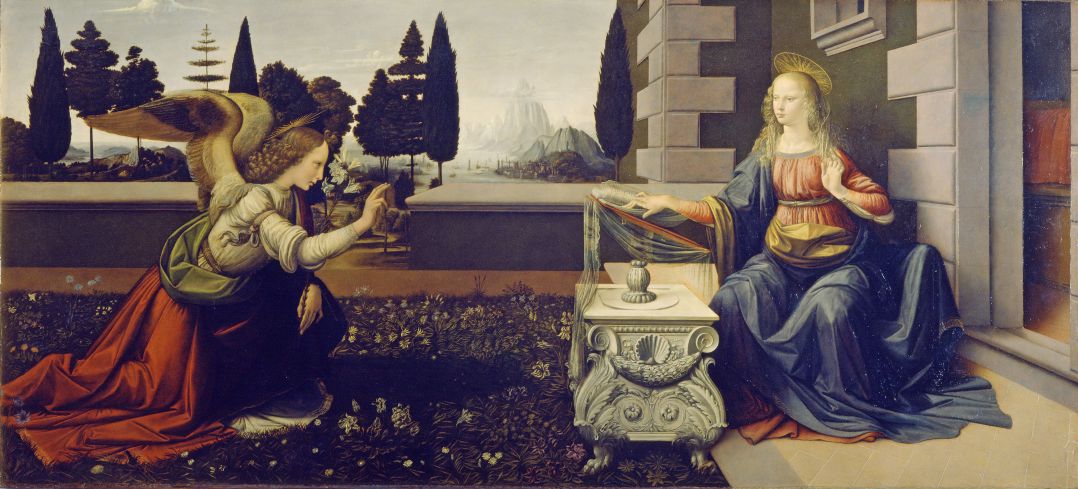
The artists of the second Renaissance

During the fifteenth century, a vast cultural renewal took place in Italy which took the name of Renaissance. Discover with us which are the greatest artists of the second Renaissance!
The Renaissance and its phases
The Renaissance was an era of great artistic geniuses who gave birth to a real process of renewal that involved not only art but also literature, thought and sciences.
The major centers in Italy involved in this artistic renewal were:
- Florence;
- Milan;
- Venice;
- Rome.
It was in Florence that this impulse of renewal was born, so much so that even today it has remained the nickname “Cradle of the Renaissance“.
During the Renaissance the man is the absolute protagonist of the art, inserted in a world regulated by pure and ideal forms (principles of balance, harmony, perfection). We return to the study of the great classics taking up the concept of “ideal beauty”.
To renew this point of view are, among the various innovations, the introduction of the movement and the intention to grasp the interiority of the subject through the expression of emotions.
The Renaissance is a long process of about 200 years and is divided into:
- Early Renaissance;
- Second Renaissance (or mature Renaissance);
- manierimso.
The second Renaissance is a very fertile period that sees artists such as:
- Leonardo da Vinci;
- Michelangelo Buonarroti;
- Raffaello Sanzio.
The artists of the second Renaissance
The second Renaissance or Renaissance mature develops from around 1500 to 1600, mainly in Rome where the popes call the best artists of the time to commission the realization of great works
architectural and pictorial, but also in Florence, Venice, and Milan.
This artistic phase has produced marvelous works such as religious and civil buildings, palaces, villas, sculptures, wall and panel paintings, cycles of frescoes.
Here are the greatest artists of the second Renaissance!
Leonardo da Vinci
Leonardo was a designer, musician, engineer and architect, a scholar of anatomy and botany but above all a famous painter for nuanced and aerial perspective.
He was a member of the court of Lorenzo the Magnificent, then moved to Milan for twenty years, at the court of Ludovico Sforza. He died in France in 1519.
Michelangelo Buonarroti
Michelangelo was a painter, sculptor and architect. His works range from the Madonna della scala, a bas-relief painted by Michelangelo at the age of 15, to the Pietà Rondanini, an all-round sculpture he worked on until 1564, the year of his death.
Raffaello Sanzio
Raphael was born in Urbino and had as teacher the “Perugino”. Later he studied the works of
Michelangelo and Leonardo, but arriving at a decidedly personal style. In fact, the scenes painted by Raphael seem to be alive and real. At the age of 25 he was commissioned to paint the frescoes
in the papal rooms.
If Florence is the “Cradle of the Renaissance” it must not be forgotten, however, that even Mugello has hosted and seen at work great Renaissance artists such as Filippo Lippi, Andrea del Sarto, Bronzino and the great Beato Angelico (who was born in Mugello).
If you want to follow an itinerary in search of the Renaissance in Mugello we are waiting for you at Villa Campestri Olive Oil Resort!
Quick Booking snippet
Tuscany, an Italian region renowned for its cultural and historical wealth, is home to numerous UNESCO World Heritage Sites. These sites represent not just the architectural and artistic beauty of the region but also its significant historical heritage.
Italian cuisine, celebrated globally, is a mosaic of flavors and traditions. From the rolling hills of Tuscany to the bustling streets of Naples, each region contributes its unique essence to what we recognize as Italian cuisine. This culinary journey explores how history, culture, and regional diversity have shaped the renowned gastronomy of Italy.
Tuscany is world-renowned for its rich winemaking tradition, a heritage rooted in centuries of history and culture. In this detailed guide, which is like a true oenological journey, we will discover not only the fine wines of the region but also the traditions and landscapes that make Tuscany an unmissable destination for wine lovers.
In the heart of Italy, Tuscany stands out as one of the most emblematic regions for wine production. Famous for its landscape of gentle hills, cypress trees, and picturesque villages, this region is also a paradise for wine lovers. Tuscan vineyards, nourished by fertile soil and an ideal climate, produce wines that are appreciated worldwide […]
For those looking for a firsthand experience, the Agricultural Tourism Company Badia di Susinana offers horseback rides and trekking and riding courses with a guide, in addition to hospitality for horses and riders, located in Palazzuolo sul Senio. Alternatively, the Farm I Cavalli del Vento allows crossing beech forests and vast chestnut groves, with rides […]
Sport fishing in Tuscany offers a wide range of opportunities due to the abundance of inland and coastal waters in the region. Specifically, the province of Pistoia, with Lake Nievole in Serravalle Pistoiese, is renowned for trout fishing and other fish such as carp, grass carp, tench, and sturgeon, with a catch and release rule. […]
In Val di Chiana, to savor an authentic Chianina steak, there are several renowned restaurant options: 1. Ristorante Casa Cecco: Offers the chance to taste a Chianina steak in a farmhouse dating back to 1600. 2. Agriturismo di Trequanda: Here, Chianina meat, raised in local pastures and processed by the company’s trusted butcher shop, becomes […]
The Italian Quattrocento was a period of extraordinary artistic effervescence that produced numerous world-renowned artists. Among them, some of the most influential were: 1. Andrea Mantegna (1431–1506): A painter and engraver from Padua, famous for his frescoes in the Camera degli Sposi in Mantua.
